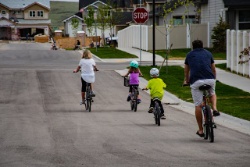Burns – a lifetime of treatment
Burns – a moment of carelessness, a lifetime
of treatment
The Injury Prevention
Network of Aotearoa New Zealand is issuing a winter burns
warning.
National Manager, Val Norton, says, “Every year, around one percent of New Zealanders get burned. That’s 41,000 people according to latest population estimates. Ten percent of burn victims will require hospitalisation, and 10 percent of those (410 people) will either die or come close to it. That’s more than one a day.”
Though we refer to them as accidents, Dr Richard Wong She, Clinical Leader for Burns at the National Burn Unit (Middlemore Hospital), says almost all burns are quite preventable, and happen as a result of carelessness.
“It’s really quite tragic. Just a moment’s carelessness can lead to a lifetime of treatment.
Furthermore people who get seriously burned may never
fully recover despite our best efforts. “I’d rather
break every bone in my body than be seriously burned. Bones
heal, but burns are unrelentingly excruciating. People with
serious burns often require lifelong therapy and may never
be able to do normal everyday things again without
assistance, such as eating or using the toilet. “As well
as a loss of independence and income, more importantly
patients can lose their dignity and self esteem.”
Dr Wong She says up to three quarters of patients presenting to hospitals with burns are males with ‘flash and fire’ injuries they have sustained at home where OSH regulations are not enforced. “Men just love playing with fire, and I’ve learned never to underestimate the ingenuity of my fellow man when it comes to accelerants, barbeques, bonfires and alcohol.” Plastic surgeons in the four New Zealand centres (Auckland, Waikato, the Hutt Valley and Christchurch) deal daily with every type of burn imaginable, and the hardest part is having to operate on children.
Often their burns are caused by scalding from steam or hot water. Sometimes they’ve been deliberately inflicted with cigarettes, lighters or even immersion in hot water. In winter time, children are often burned by heaters that do not have appropriate guards in place. Others (including adults) can get contact burns from falling asleep with very hot hot water bottles lying against their skin. Cooking fires are common with tea towels and curtains catching alight.
Dr Wong She says things are better now than they used to be thanks to campaigns that ran in recent years warning about the danger from burns and stressing the ‘Seconds to burn, minutes to cool’ message. “People have become more aware of burn dangers around the home and also about the importance of good first aid. Having cold water running over the burn for 20 minutes decreases the severity of the burn and consequently the likelihood of surgery and permanent disability. “It will be interesting to do studies in coming years to see how well these messages have stuck in the public’s mind.”
The New Zealand Fire Service has a number of recommendations for being ‘firewise”, and says the message is as much for grown-ups as it is for kids: Have your electric blankets checked annually by a registered and approved technician, and always turn them off before getting into bed. Don’t overload powerpoints. Use multi-boxes with circuit breakers. Remember the ‘Heater Metre’ rule. Keep clothes, furniture and curtains at least a metre away from heaters and fireplaces.
Always use fire or spark guards with open fires. Sweep chimneys and flues at least once per year and at the start of winter. Do not store objects on top of heaters. Keep your kitchen tidy and wear close-fitting sleeves when cooking. Keep keys in deadlocks at night so you can get out of the house quickly if you need to. Check all appliances are turned off before leaving the house. Do a fire safety check before going to bed.
ENDS


 Pure Adventure Charitable Trust: Iconic One New Zealand GODZONE To Make Triumphant Return To New Zealand’s Adventure Racing Scene
Pure Adventure Charitable Trust: Iconic One New Zealand GODZONE To Make Triumphant Return To New Zealand’s Adventure Racing Scene The Charter School Agency: New Charter Schools Open Doors To First Students
The Charter School Agency: New Charter Schools Open Doors To First Students  The Wednesday Challenge: Tauranga Travel Initiative Goes National
The Wednesday Challenge: Tauranga Travel Initiative Goes National Love Grace Handbag Appeal: How Kiwis United to Collect 5,269 Handbags in Grace Millane's Memory
Love Grace Handbag Appeal: How Kiwis United to Collect 5,269 Handbags in Grace Millane's Memory Sharon McLennan, The Conversation: Fiji’s HIV crisis is a regional challenge that demands a regional response
Sharon McLennan, The Conversation: Fiji’s HIV crisis is a regional challenge that demands a regional response Waitangi Treaty Grounds: New Exhibition At Te Kōngahu Museum Of Waitangi: He Kura Toi Tangata - 50 Years Of The Waitangi Tribunal, 1975-2025
Waitangi Treaty Grounds: New Exhibition At Te Kōngahu Museum Of Waitangi: He Kura Toi Tangata - 50 Years Of The Waitangi Tribunal, 1975-2025